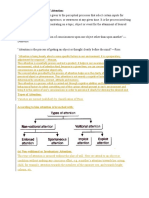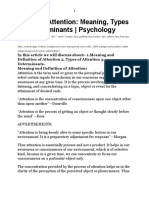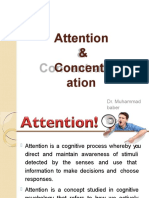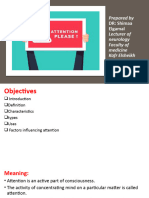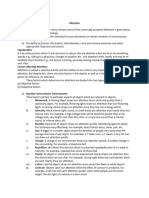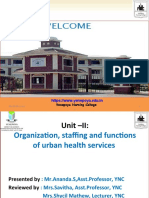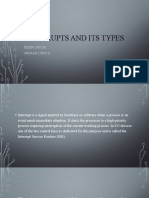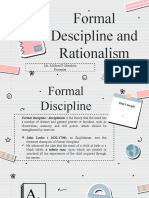0% found this document useful (0 votes)
45 views56 pagesPsychology Unit VI Attention Anand
The document discusses cognitive processes, focusing specifically on attention as a crucial aspect of cognition. It defines attention, outlines its types (volitional, non-volitional, selective, divided, etc.), and examines factors that influence attention, including external and internal determinants. Additionally, it highlights the implications of attention in nursing practice, emphasizing the need for mental alertness and focus in various nursing activities.
Uploaded by
Anand gowdaCopyright
© © All Rights Reserved
We take content rights seriously. If you suspect this is your content, claim it here.
Available Formats
Download as PPTX, PDF, TXT or read online on Scribd
0% found this document useful (0 votes)
45 views56 pagesPsychology Unit VI Attention Anand
The document discusses cognitive processes, focusing specifically on attention as a crucial aspect of cognition. It defines attention, outlines its types (volitional, non-volitional, selective, divided, etc.), and examines factors that influence attention, including external and internal determinants. Additionally, it highlights the implications of attention in nursing practice, emphasizing the need for mental alertness and focus in various nursing activities.
Uploaded by
Anand gowdaCopyright
© © All Rights Reserved
We take content rights seriously. If you suspect this is your content, claim it here.
Available Formats
Download as PPTX, PDF, TXT or read online on Scribd
/ 56




